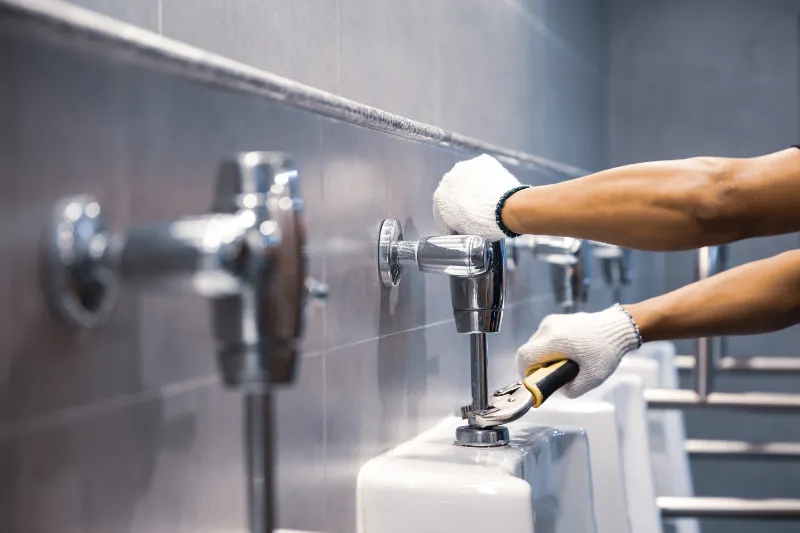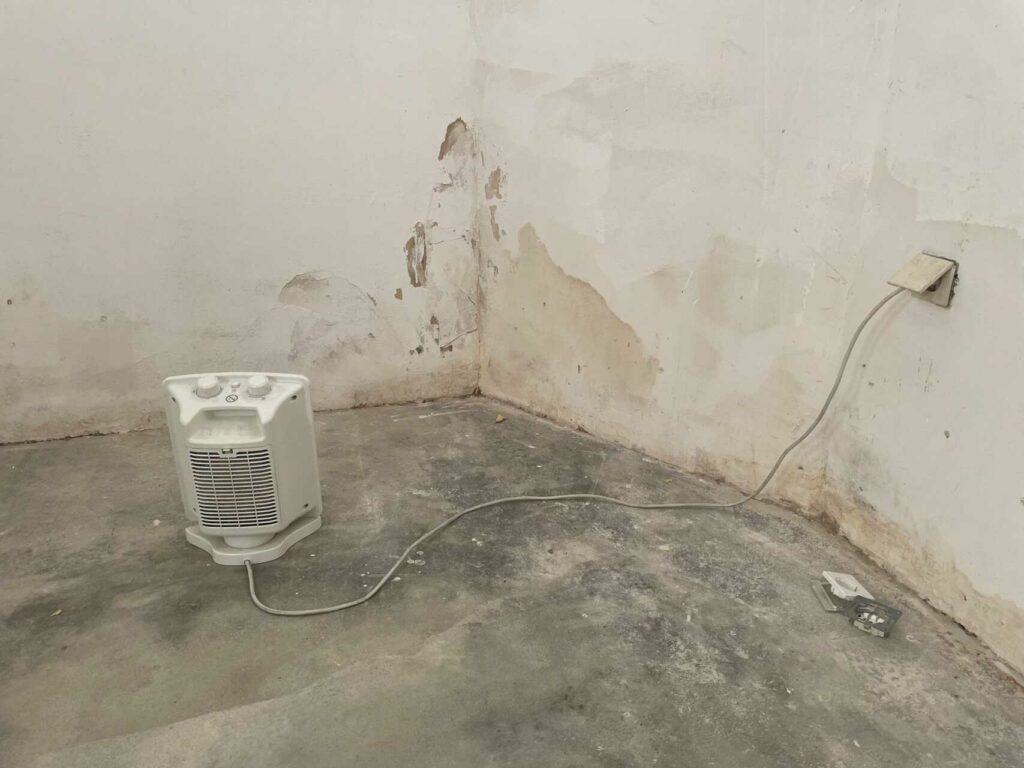Contents
Are you wondering about the right slope for your toilet drain? Can you have too much slope in drain pipe? Look no further! In this article, we’ll guide you through the importance of slope in toilet drain systems and explain the ideal range for proper drainage.
We’ll also discuss the factors that affect the slope and provide tips on how to measure and achieve the correct slope.
Don’t let improper slope cause you any trouble – let’s get your toilet drain working perfectly!
Key Takeaways
- Proper slope ensures smooth flow of waste and water
- The optimal slope range for toilet drains is 1/8 inch to 1/4 inch per foot
- Factors such as pipe diameter, drain line length, and obstructions can affect the proper slope
- To achieve the correct slope, measure the existing slope, make adjustments if necessary, and test drainage by flushing the toilet.
Importance of Slope in Toilet Drain Systems
To ensure proper functioning, it’s crucial for you to maintain the correct slope in your toilet drain system. The slope refers to the angle at which the pipe is positioned to allow for the smooth flow of waste and water. This may seem like a minor detail, but it plays a significant role in preventing clogs and ensuring that your toilet operates efficiently.
When the slope is too steep, the waste and water can rush through the pipe too quickly, causing turbulence and potentially leading to clogs. On the other hand, if the slope is too gentle, the waste and water may not flow with enough force to properly clear the pipe, resulting in blockages and backups. Therefore, it’s essential to find the right balance.
The optimal slope for a toilet drain is typically between 1/8 inch and 1/4 inch per foot of pipe. This slight incline allows gravity to assist in the movement of waste and water, preventing stagnant pools and promoting a consistent flow. It also helps to prevent the accumulation of debris and sediment, which can lead to blockages over time.
Maintaining the correct slope in your toilet drain system requires careful installation and regular maintenance. If you’re unsure about the slope of your existing drain or are planning to install a new one, it’s advisable to seek professional assistance. A plumber with expertise in drain systems can ensure that the slope is set correctly and provide guidance on proper maintenance to keep your toilet running smoothly.
Ideal Slope Range for Toilet Drains
Now let’s delve into the ideal slope range for toilet drains and how it can impact the efficiency of your plumbing system. Maintaining the proper slope in your toilet drain is crucial for ensuring the smooth flow of waste and preventing clogs. Here are four key points to consider:
- Optimal slope: The ideal slope range for toilet drains is between 1/8 inch and 1/4 inch per foot. This slope allows gravity to aid in the movement of waste, preventing it from accumulating and causing blockages.
- Efficient waste removal: A properly sloped drain ensures that waste is swiftly carried away from your toilet and into the sewer line. This prevents backups and helps maintain the overall cleanliness of your plumbing system.
- Preventing clogs: By providing a sufficient slope, you create a self-cleaning effect in the drainpipe. The force of water flowing down the drain helps flush away any debris and prevents it from settling and causing clogs.
- Avoiding costly repairs: If the slope of your toilet drain is too steep or not steep enough, it can lead to problems such as slow drainage, recurring clogs, and even sewer line backups. By ensuring the proper slope, you can avoid these issues and the costly repairs that come with them.
Factors Affecting the Proper Slope of a Toilet Drain
Factors that can affect the proper slope of a toilet drain include the pipe diameter, the length of the drain line, and any obstructions in the line. It’s important to consider these factors when installing or maintaining a toilet drain to ensure optimal performance and prevent issues such as clogs and backups.
Table: Factors Affecting Proper Slope of a Toilet Drain
| Factors | Description |
|---|---|
| Pipe Diameter | The size of the drain pipe can impact the slope needed for proper drainage. Smaller pipes may require steeper slopes to maintain a sufficient flow rate. |
| Length of Drain Line | The length of the drain line plays a role in determining the slope required. Longer drain lines may need a greater slope to ensure wastewater flows smoothly and doesn’t accumulate in the pipe. |
| Obstructions in the Line | Any obstructions in the drain line, such as debris or tree roots, can impede the flow of wastewater. These obstructions can disrupt the slope of the drain and lead to blockages. Regular inspection and maintenance can help identify and remove any obstructions. |
By considering these factors, you can ensure that the toilet drain operates efficiently and effectively. If you’re unsure about the proper slope for your toilet drain, it’s recommended to consult a professional plumber who can assess your specific situation and provide appropriate guidance.
How to Measure and Achieve the Correct Slope for a Toilet Drain
To achieve the correct slope for a toilet drain, you’ll need to measure and adjust the angle of the drain pipe. Here are four steps to help you measure and achieve the correct slope for your toilet drain:
- Step 1: Determine the desired slope: The standard slope for a toilet drain is 1/4 inch per foot. This means that for every foot of horizontal distance, the drain pipe should slope downward by 1/4 inch. Measure the distance from the toilet flange to the main drain line to determine the length of the drain pipe.
- Step 2: Measure the existing slope: Use a level and a tape measure to check the existing slope of the drain pipe. Place the level on top of the pipe and measure the difference in height between the starting point and the end point. This will give you an idea of how much adjustment is needed.
- Step 3: Adjust the slope: If the existing slope isn’t in line with the desired slope, you’ll need to make adjustments. This can be done by adding or removing pipe sections or by using shims to raise or lower the pipe. Ensure that the slope is consistent throughout the entire length of the drain pipe.
- Step 4: Test the drainage: Once you have adjusted the slope, it’s important to test the drainage to ensure that water flows smoothly and efficiently. Flush the toilet several times and observe the flow of water. If there are any issues, make further adjustments until the drainage is optimal.
Common Issues Caused by Improper Slope in Toilet Drains
If you have an improper slope in your toilet drain, you may experience common issues such as clogs and slow drainage. These problems can be frustrating and inconvenient, but they can also be easily resolved by addressing the slope of your toilet drain.
Here are some common issues that may arise due to an improper slope in your toilet drain:
| Common Issues | Causes | Solutions |
|---|---|---|
| Clogs | An improper slope can cause waste and debris to accumulate in the drain, leading to clogs. | Use a plunger or a plumbing snake to remove the clog. If the problem persists, consider calling a professional plumber to inspect and fix the issue. |
| Slow drainage | When the slope is not steep enough, water may not flow quickly enough through the drain, resulting in slow drainage. | Check for any blockages in the drain and clear them if necessary. If the problem persists, consult a plumber to correct the slope of the drain. |
| Odor | An improper slope can cause water to pool in the drain, leading to stagnant water and foul odors. | Clean the toilet drain thoroughly to remove any build-up and eliminate the odor. If the problem persists, consider adjusting the slope of the drain to ensure proper water flow. |
| Backups | If the slope of the toilet drain is too steep, it can cause backups and overflows when flushing. | Adjust the slope of the drain to ensure proper water flow and prevent backups. If the problem continues, seek the assistance of a professional plumber. |
Conclusion
In conclusion, ensuring the proper slope for a toilet drain is crucial to maintain the functionality and efficiency of the drainage system. The ideal slope range for toilet drains is 1/4 inch per foot.
Factors such as pipe diameter, waste volume, and material buildup can affect the proper slope. Measuring and achieving the correct slope is important to prevent common issues like clogs, backups, and unpleasant odors.
Maintaining a well-sloped toilet drain will help avoid costly repairs and maintain a properly functioning bathroom.




